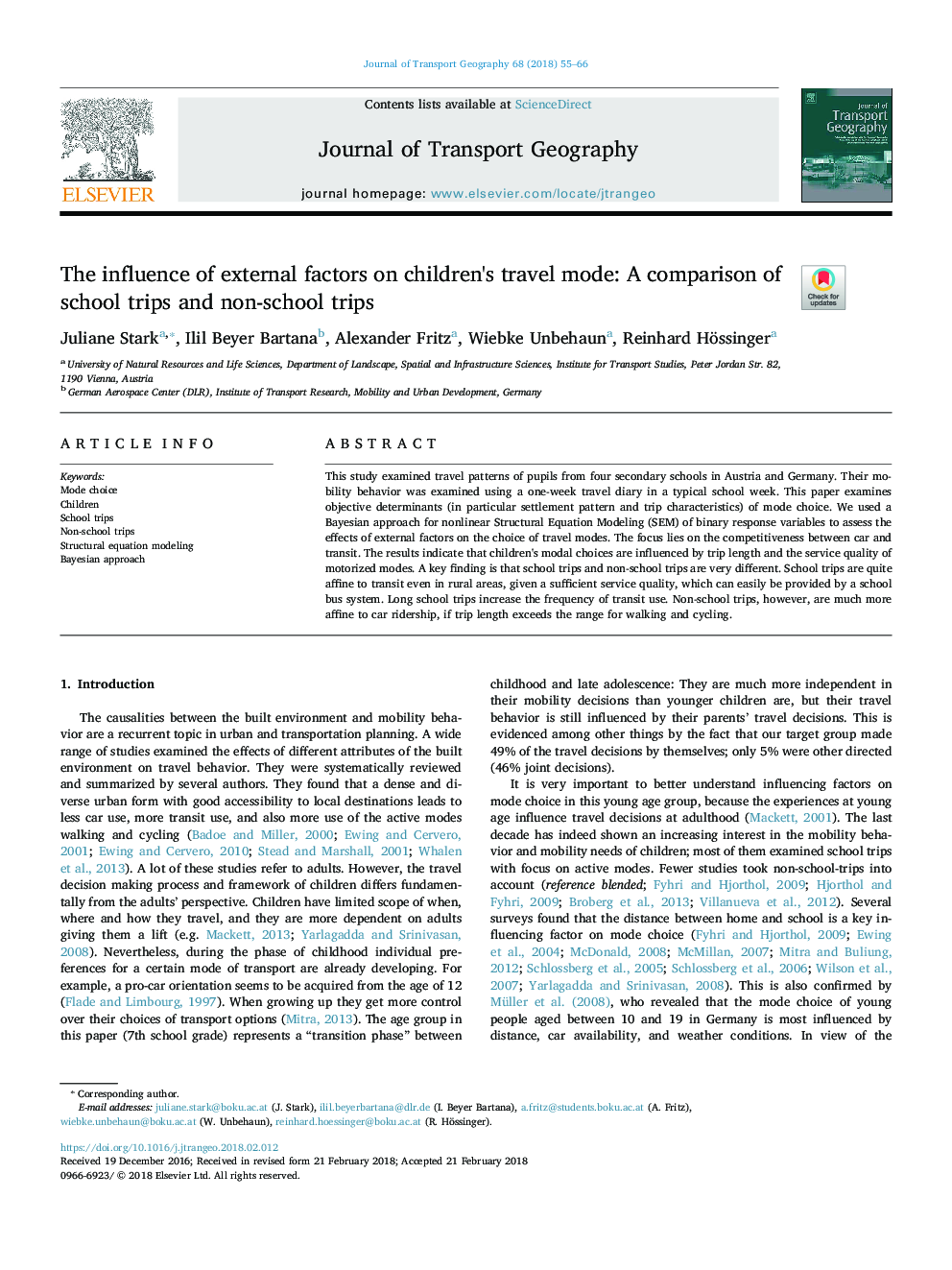| Article ID | Journal | Published Year | Pages | File Type |
|---|---|---|---|---|
| 7485058 | Journal of Transport Geography | 2018 | 12 Pages |
Abstract
This study examined travel patterns of pupils from four secondary schools in Austria and Germany. Their mobility behavior was examined using a one-week travel diary in a typical school week. This paper examines objective determinants (in particular settlement pattern and trip characteristics) of mode choice. We used a Bayesian approach for nonlinear Structural Equation Modeling (SEM) of binary response variables to assess the effects of external factors on the choice of travel modes. The focus lies on the competitiveness between car and transit. The results indicate that children's modal choices are influenced by trip length and the service quality of motorized modes. A key finding is that school trips and non-school trips are very different. School trips are quite affine to transit even in rural areas, given a sufficient service quality, which can easily be provided by a school bus system. Long school trips increase the frequency of transit use. Non-school trips, however, are much more affine to car ridership, if trip length exceeds the range for walking and cycling.
Related Topics
Life Sciences
Environmental Science
Environmental Science (General)
Authors
Juliane Stark, Ilil Beyer Bartana, Alexander Fritz, Wiebke Unbehaun, Reinhard Hössinger,
